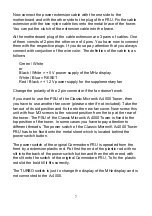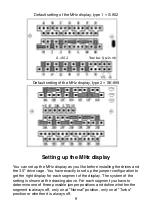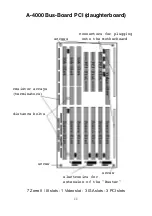
Now plug the CPU-board with the distance bolds back onto the
motherboard. Some revisions of the motherboard have different LED
connectors so you should perform a function test before you install the
busboard, because the LED connectors and the RAM-blocks are covered
by the busboard afterwards. If a LED doesn' t work, simply change the
polarity of the plug or put the plug one position to the side. Switch the
computer off now and install the new busboard into the tower.
To do so push the 100-pin connector into the busboard socket on the
motherboard so that it mounts tightly and has a good contact. The
busboard is then fixed with the M3 screws onto the holders. The holding
edge can corrected in its position by simply loosen the two screws at the
rear of the tower.
Next take the both non-conducting red washers and put them onto the two
holes that have still remained free over the hexagonal screws. Screw the
M3 screws into the threads and fix the busboard. The non-conducting
washers are necessary to protect the conductors from a possible short
circuit by the big heads of the M3 screws. If there are no washers included
then use the original Commodore M3 screws with the small heads instead,
which have left over while dismantling the Amiga.
The next step is to mount the original A-4000 PSU. Fit the PSU onto the
holding construction on the rear of the tower and fix it with two M3 screws.
6








































